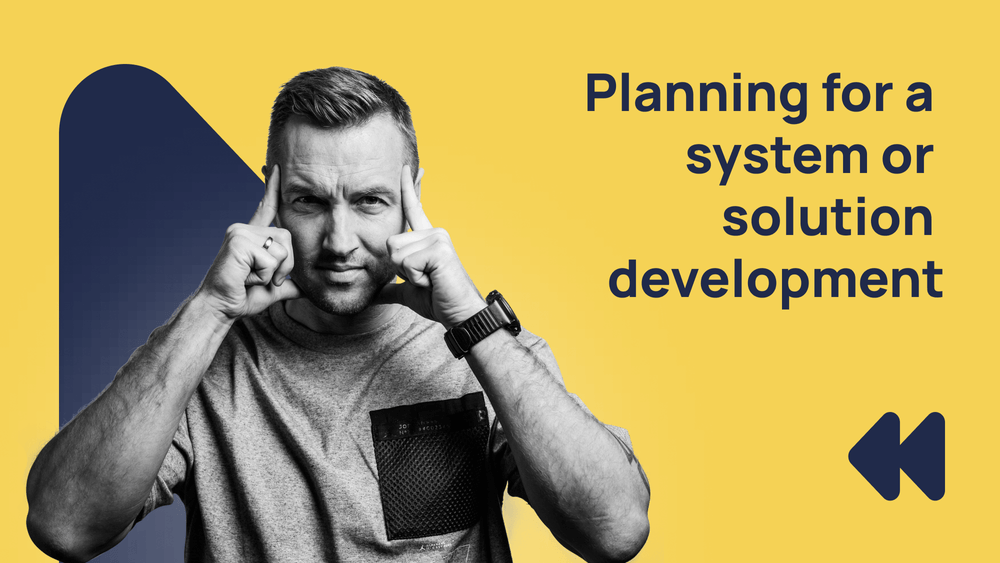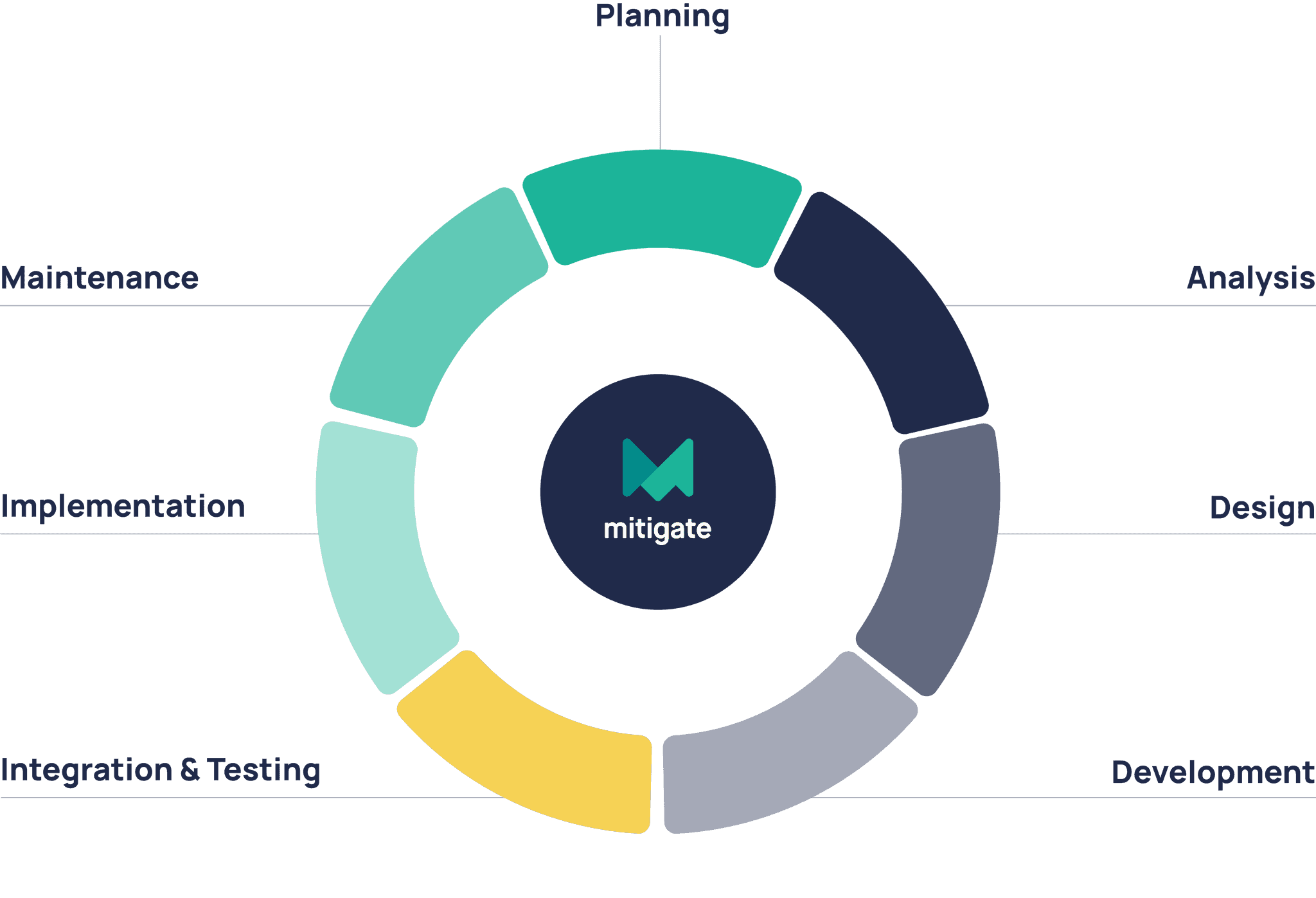Software development projects can be quite complex, as they are exciting. From discussing and developing initial ideas and concepts to finally releasing the software, there are a number of phases in the software development life cycle (SDLC).
Each of these phases should be executed with a goal in mind and a strategy in place. That is why proper and timely preparation is key.
Mission, vision and product roadmap
To put it as simply as possible, when thinking about the product vision, one should be thinking of the overarching long-term mission of the product. It should be directed towards solving a problem that is, ideally, in high demand for our target market that is willing to pay for the solution.
After setting a clear product vision and goal, developing a product roadmap would be the next logical step to providing a structured timeline for achieving set objectives.
Communicating them successfully to all the team members to ensure everyone is on the same page on how to approach this project is essential for the project’s further development.
Here are some characteristics of a good roadmap:
- Easily comprehensible
- Prioritizes tasks and workload
- Shows dependencies between features and phases
- Flexibility
- Permits iterations
- SMART goals
- ser-centric mindset
Incorporating these considerations will help guide your team effectively, as well as enhance the chances of delivering a successful, timely and impactful solution to the market.
Analyzing the market and market positioning
Is there a market for your solution? What do you want to achieve with your product? Who are your competitors?
These are just some of the questions that all of the team members working on the project should have a clear answer to at this phase of the development preparation.
After defining a clear product roadmap, vision and appointing a project manager to lead the process, it is time to focus on communicating and understanding your target audience and target market.
Even if you think you have the best product available on the market, at the end of the day, it becomes irrelevant if there is nobody interested in using or buying it. Making sure the developers have a clear user-centric mindset while working on the product is a must.
Assembling a high-quality team
It goes without saying that a good plan without a successful software development team to execute it, will only get you so far. Building a high quality team of experts that compliment each other's skills and strengths should be one of the main priorities.
If you are a smaller company, or do not have a team of in-house software developers, there are other options you can choose from.
Outsourcing your project to a team of developers has been a popular choice among many companies. Alternatively, you can also hire developers through a recruitment agency or have a company specialized in the B-O-T business model (Build-Operate-Transfer) conclusively build a custom team of software developers.
Once you have your team set up, it is time to take the next step, appoint the project manager and prepare the team for developing the solution.
Appointing the project manager
When working on a software product development, it seems that one of the most prioritized initial tasks seems to be building a technical team with the expertise required to execute the project.
Although that should be one of the priorities, it is equally important to allocate resources on finding a suitable project manager who will lead the team and ensure the project is on schedule and in line with the defined roadmap and product vision.
They are also responsible for coordinating teams and facilitating communication among all stakeholders, oftentimes making them the heart and soul of the project, as well as accountable for nurturing a collaborative environment.
Seeing how big of a role they play, it is of the essence that the individual taking on this role has a high level of understanding the project’s technical aspects.
Designing the development process
Designing the software development process that works best considering the team, project, resources and objectives should not be taken lightly. Considering the methodology we use, the steps we take to develop software remain the same but how we approach them and treat the process, differs.
Most developers and managers usually choose one methodology out of the six, but hybrid models are also possible and popular:
| Waterfall model | Good choice for detailed projects in need of structure |
| Iterative model | Favored for its adaptability and ease to accommodate change |
| Spiral model | Ensures regular incorporation of feedback which results in significant time and money savings when implementing change |
| V-model | Tends to be resource-intensive and inflexible, but useful for projects with clear requirements and in need of testing |
| Big bang model | Ideal for clients who don’t have a clear vision of what their product should look like, as it tests many different ideas. Recommended for small or experimental projects |
| Agile model | Prioritizes collaboration and implementation of small changes based on feedback. Preferred choice by developers and often used in a hybrid version with the waterfall model (“Agile-Waterfall hybrid”) |
To find out about each of them in more detail, click on this link
Once you have chosen the model of developing software, you can finally start thinking about the SDLC (software development life cycle) and what kind of support and approach your software will need in various phases.
Based on the stage of the life cycle it is in, the tasks for the appointed team will vary, so planning in advance or predicting what challenges may arise would be quite helpful in mitigating or resolving them
The typical software development life cycle consists of 7 stages:
The stages are more or less self-explanatory and easy to understand so there is no need to go into too much detail.
Important to keep in mind
A couple of more tips on the entire software development planning and execution process coming from our experience:
| Don’t cut corners | We understand that sometimes the development process may become overbearing and that you may get tempted to choose an easier approach to development, but we advise to follow through with the original plan as it almost always proves to be the better and more sustainable long-term choice. |
| Establish Robust Documentation Practices | Documentation is often undervalued but is essential for maintaining the longevity and sustainability of your software. Encourage your team to maintain detailed and organized documentation throughout the development process. This includes code documentation, user manuals, system architecture diagrams, and version control records. Effective documentation not only aids in project management but also simplifies future maintenance and upgrades |
| Invest in ongoing learning and skill development | The field of software development is continually changing and evolving. In order to stay relevant, the team members should be encouraged to develop their skills, be knowledgeable about the industry trends and engage in continuous learning. Make an effort to allocate resources in their further development. Provide training, workshops and certifications as they not only keep your team competitive but motivated as well. |


